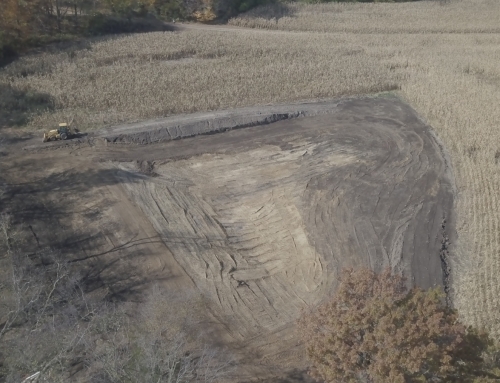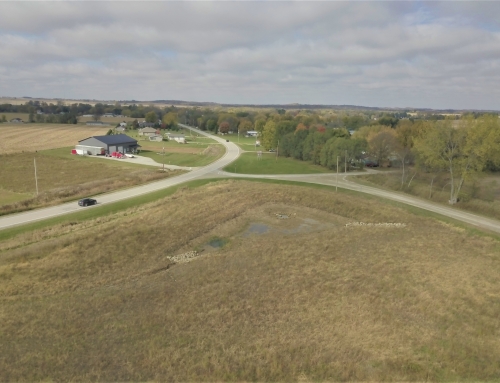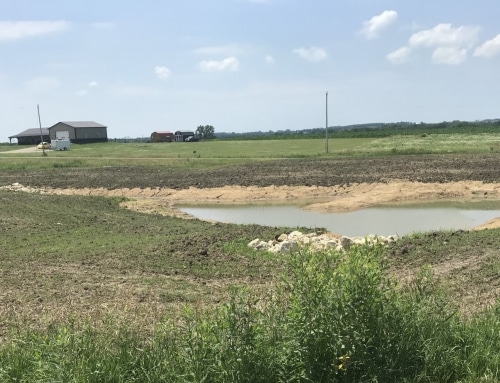Cities, counties, and other groups are organizing regional watershed management authorities (WMAs) and hiring project coordinators as the Iowa Watershed Approach (IWA), a $96.9 million program, enters its first official year and kicks off work to reduce flood risks and improve water quality across the state.
It was roughly a year ago that the governor’s office announced the grant from the U.S. Department of Housing and Urban Development. Iowa’s proposal, The Iowa Watershed Approach for Urban and Rural Resilience, received the fourth largest award, coming in behind New Orleans, New York, and Virginia.
A key player behind the grant win was the Iowa Flood Center (IFC) at the University of Iowa, which helped develop and implement the IWA. In the past year, IFC representatives and other partners have fanned out across the state to meet with residents, elected officials, and conservation advocates to talk about details of the program, including cost-share assistance available for the construction of farm ponds, wetlands, and grassed waterways to manage runoff and reduce flooding.
More recently, as the WMAs start to take shape, IFC officials say they have been encouraged to see local residents stepping up to take control of watershed actions.
“They have really taken ownership and are adapting the program to meet their individual watershed needs,” says Larry Weber, IFC co-founder. “This is exactly the kind of local stewardship we envisioned.”
Weber says he’s looking forward to reaching other milestones as well, including the addition in 2017 of several new watershed coordinators and the creation of at least three new WMAs.
“We will also be identifying locations for the construction of projects such as ponds, wetlands, and more,” Weber says. “It’s all very exciting.”
Iowa has been hit hard by flooding in recent years. From 2011 to 2013, heavy rain prompted eight separate presidential disaster declarations in 73 counties, covering more than 70 percent of the state. A record-setting flood in 2008 triggered federal disaster relief, including funding used by the IFC for a pilot venture, the Iowa Watersheds Project, which ended in 2016.
“We know we need to move the needle, but therein lie some big questions: What projects and structures do we implement to reduce nutrient runoff, and how do we measure their success over time? We’re ready to get some answers to those questions.”
The nine watersheds participating in the program are the Middle Cedar, East and West Nishnabotna, Clear Creek, Dubuque/Bee Branch, English River, North Raccoon, Upper Iowa, and Upper Wapsipinicon. Progress in each watershed varies: Some are establishing WMAs; others are in the process of hiring coordinators, an important first step to commence watershed projects.
“We just hired our coordinator and he’s the one who will build relationships with land owners and execute the watershed plan,” says Todd Wiley, Benton County supervisor and chairman of the Middle Cedar WMA. According to Wiley, the federal grant’s five-year time frame means “there’s a bit of pressure to get things going. The clock is definitely ticking.”
“We really want to get the ball rolling,” says Michelle Franks, executive director of Golden Hills Resource Conservation and Development, Inc., who is working to build a WMA (sometimes referred to as a “coalition”) on the East and West Nishnabotna River. “A watershed plan is something that has been needed in southwest Iowa for some time. We feel like the time is now.”
For Franks, the process of getting the East and West Nishnabotna River WMA finalized has been a bit like “herding cats” because there are so many entities that must be included in the initial membership invite.
“We’ve got 48 towns, 12 counties, and 13 soil and water conservation districts in our watershed boundaries,” says Franks. “It’s been a real challenge to reach out to each of them and to explain the program and what we are trying to do.”
On the North Raccoon River, James Patrick, Storm Lake city manager, is also working to get a local WMA formed. About a dozen entities have joined the coalition so far, with more expected to sign on before the end of March. The focus of the North Raccoon River WMA will be on reducing floods and controlling nutrient runoff, which will improve water quality.
“We’re not going to make much headway unless we have a collaboration of efforts,” says Patrick.
Back on the Middle Cedar River, Wiley says his group is excited about welcoming its new coordinator.
“We have a lot of rural acreages in our watershed area, and many residents are concerned about water quality,” Wiley says. “We know we need to move the needle, but therein lie some big questions: What projects and structures do we implement to reduce nutrient runoff, and how do we measure their success over time? We’re ready to get some answers to those questions.”
The IWA is a collaboration of numerous agencies, universities, nonprofits, and municipalities. See the full list here.
For more information, visit https://iowawatershedapproach.org/.


